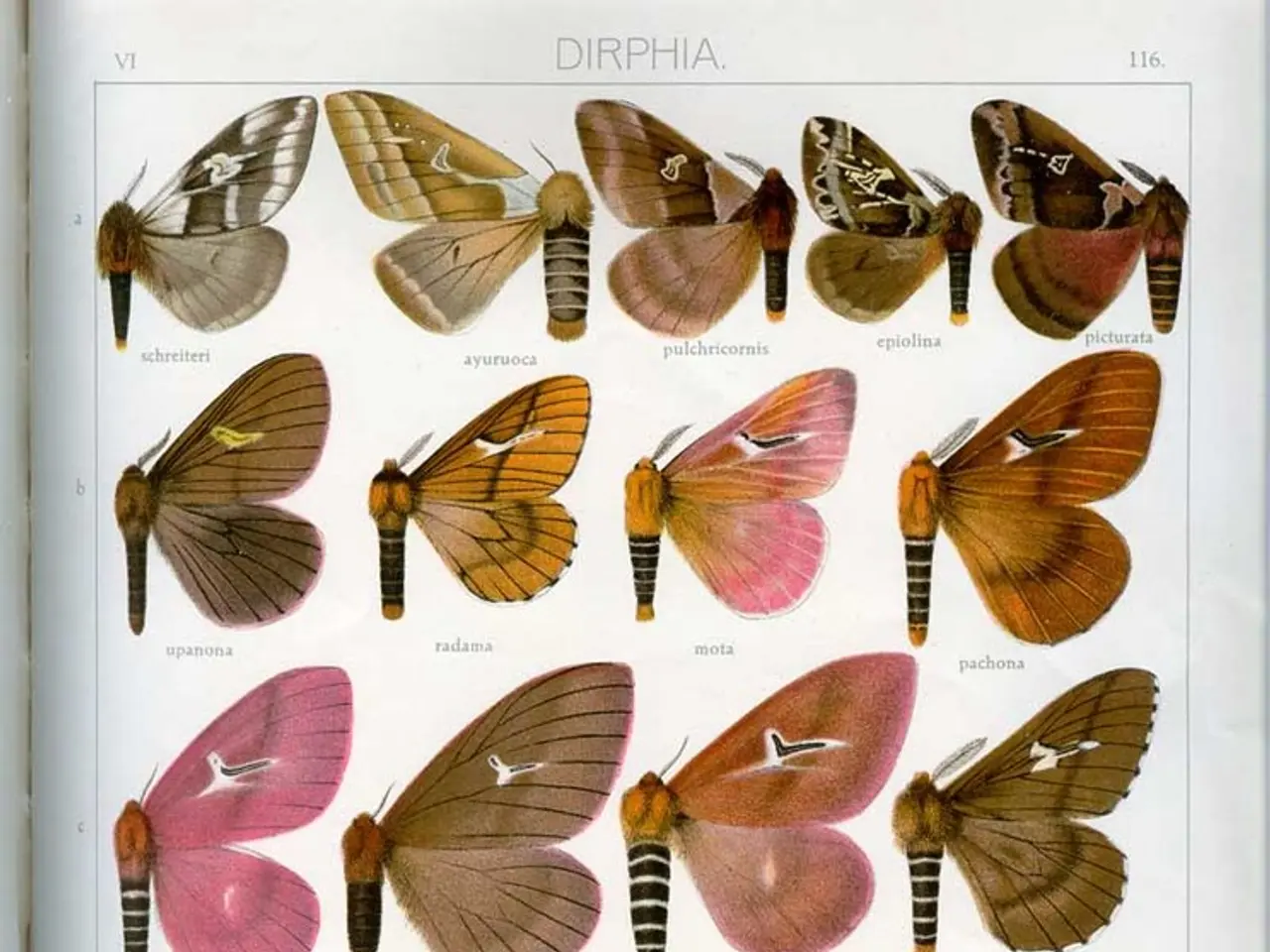Chaos in Brain Functioning: The Boost of Randomness in Innovative Solution Seeking
In the realm of cognitive science, a fascinating concept is gaining traction – the entropic brain. This hypothesis suggests that our brains, when in certain states, exhibit a level of irregularity in brain signal patterns, known as brain entropy, which is closely linked to creativity and imagination.
High-entropy brains think in many directions at once, often leading to surprising insights. This dynamic activity, characterised by complex, unpredictable patterns, is not unlike the workings of a well-oiled machine with many possible states. Such brains are associated with greater connectivity between distant brain regions, increased mental flexibility, and less predictability in thought patterns.
Our brains naturally shift between high and low entropy states depending on what we're doing. While low-entropy states are useful for precision, discipline, and execution, they are not conducive to breakthroughs. On the other hand, high entropy, with its chaotic dynamic processing, is ideal for creative thinking.
Practices like meditation, free writing, improvisation, and strategic boredom can increase mental entropy, fostering a fertile ground for fresh ideas. Breaking routines, allowing daydreaming, and using random input can also encourage playful experimentation, further fuelling this creative process.
Research into psychedelics has shown that substances like psilocybin or LSD significantly increase brain entropy. This finding supports the entropic brain hypothesis, as these substances are known to induce altered states of consciousness, often associated with increased creativity.
History's greatest inventions, such as Velcro and the microwave oven, are examples of "accidental" discoveries that rely on a brain primed to connect unrelated dots, a process aided by high entropy. These discoveries were not the result of linear, predictable thought processes but rather the emergence of novel ideas from the chaotic dynamic processing of the brain.
The "Entropic Brain" hypothesis posits that creative thinking corresponds to higher entropy brain states, characterised by increased disorder and uncertainty in neural activity. Such states enable more primary or fluid modes of consciousness compared to normal wakefulness. Higher entropy has been linked to creative cognition as it promotes loosening of conventional neural constraints, fostering originality.
Neurological and psychological changes that alter brain dynamics, such as in Parkinson’s disease patients, can unlock latent creativity by balancing top-down (goal-directed) and bottom-up (emotion-driven) processes. This interplay reduces self-censorship and supports the creation of meaningful original work, illustrating how changes in brain function and potentially brain entropy relate to creative expression.
At the neural signal level, increased brain entropy reflects more complex and variable temporal patterns. Studies show that during cognitive tasks demanding creativity, entropy increases alongside variability in brain signals, supporting flexible integration of information over time.
Scientists measure brain entropy using tools like functional MRI (fMRI) or EEG. These tools provide insights into the neural mechanisms underlying creativity, offering promising avenues for further research and potential applications in enhancing creative thinking.
In conclusion, brain entropy serves as a neural marker for creativity by indicating the level of complexity and flexibility in brain dynamics, which facilitates the generation of novel and original thoughts. By juggling constraints, embracing divergent thinking, and encouraging practices that increase mental entropy, we can unlock our creative potential and foster a more innovative and imaginative world.
- In the field of cognitive science, the entropic brain theory has gained popularity, suggesting a connection between brain entropy and mental health, creativity, and imagination.
- High-entropy brains, characterized by complex, unpredictable patterns, are associated with increased mental flexibility, greater connectivity between distant brain regions, and less predictability in thought patterns.
- Practices like meditation, free writing, improvisation, and strategic boredom can increase mental entropy, fostering a more fertile ground for fresh ideas and creativity.
- Research into psychedelics has shown that substances like psilocybin or LSD significantly increase brain entropy, supporting the entropic brain hypothesis.
- The "Entropic Brain" hypothesis claims that creative thinking corresponds to higher entropy brain states, leading to more primary or fluid modes of consciousness.
- History's greatest inventions, such as Velcro and the microwave oven, are examples of "accidental" discoveries that rely on a brain primed to connect unrelated dots, a process aided by high entropy.
- Neurological and psychological changes that alter brain dynamics, such as in Parkinson’s disease patients, can unlock latent creativity by balancing top-down and bottom-up processes.
- Scientists measure brain entropy using tools like functional MRI (fMRI) or EEG, providing insights into the neural mechanisms underlying creativity and offering potential applications in enhancing creative thinking.
- By encouraging practices that increase mental entropy, such as juggling constraints, embracing divergent thinking, and using strategies for increased creativity like nootropics and supplements, we can unlock our creative potential and foster a more innovative and imaginative world.




